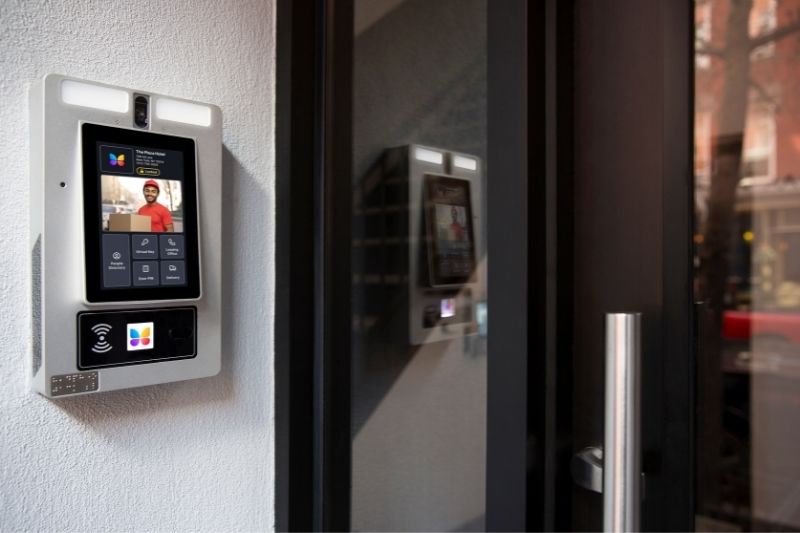Building access control systems play a critical role in commercial security today. As buildings grow larger and house more valuable assets, controlling who has access to what areas becomes increasingly important. The evolution of access control technologies has profoundly impacted security practices for modern structures. Rapid developments now allow for the seamless integration of multiple verification methods like card readers, keypads, and biometric scanners. With real-time monitoring and reporting capabilities, access control ensures that only authorized users gain approved entry – a necessity for any establishment aiming to protect operations.
Overview of Modern Building Access Control Systems
Modern building access control systems offer superior security by carefully balancing rapid entry with high-level protections.
The Integration of Multiple Verification and Identification Technologies
Building access control systems now combine credentials, biometrics, and secondary passwords to authenticate users through multiple overlapping checks. This layered authentication approach strengthens the validation process, as an individual must present two or more identifying factors to gain entry.
The Balance Between Rapid Passage and High-level Security Measures
Systems facilitate smooth approved access yet retain settings for adding precautions like biometrics based on user, hour, or area requiring stricter protocols. Administrators can also define time-based security levels, automatically increasing identification measures during off-hours, holidays, or days with heightened threats. This allows the right balance of convenience and protection.
Cutting-Edge Access Control Technologies
Leading building access control systems incorporate the latest tech for implementing advanced functionality and maximizing security capabilities. Key technologies include:
- Multi-Credential Authentication
Combining credentials, biometrics, access cards, and secondary passwords strengthens the user validation process. The use of two or more means of identification significantly decreases the chances of false positive matches during access attempts.
- Visual Monitoring and Real-Time Alarms
Modern access control systems enable administrators conveniently monitor real-time footage from their mobile phones. This feature enables remote visual confirmation and verification of access requests, with instant alerts promptly notifying of any unauthorized attempts. Additionally, live video feeds empower security operators to visually identify visitors and respond swiftly.
- Intercom Systems for Access Request
Intercom abilities facilitate basic access management and provide temporary access for service workers or visitors through audio/visual communication. Intercom devices paired with cameras let guards properly examine any access requests right from their control station.
- High-Security Applications for Specialized Scenarios
Systems designed for high-security buildings feature extra layers of security measures and central control. Advanced building access control solutions for critical sites incorporate extensive alarm capabilities, lock controls, and dual authorization requirements.
- Emergency Management and Response
Functions maintain operational continuity and safety in events like evacuations through features like lockdown commands. Automatic response features expedite mustering and ensure doors work together in an emergency to ensure order and complete building evacuation.
Integration and Management of Access Control Systems
Intelligent software simplifies the linking of commercial access control with surrounding security layers. Platforms for remote administration empower centralized arming/disarming, user privileges adjustments, and real-time event oversight. AI and Machine Learning similarly advance capabilities through facial recognition, predictive modeling, and automated access procedures based on pattern analysis.
The Synergy Between Access Control and Other Security Systems
Integration creates a unified defense through features like duress alarms notifying other devices. By linking with intruder alarms, fire panels, and video security systems, access control adds an extra layer of detection around any perimeter breach or interior incident.
Software and Cloud Platforms in Managing and Monitoring Access Control
Applications facilitate remote system control and data retrieval for quick issue resolution. Management programs and cloud-based options give administrators mobile oversight and adjustment of access control operations anytime, anywhere. Users can make real-time changes, access audit logs, and receive notifications.
The Impact of AI and Machine Learning on Access Control Systems
Emerging technologies augment user verification processes and optimize system performance. Facial recognition powered by AI improves entry validity, while predictive modeling based on usage patterns enhances security rule automation. Machine learning likewise facilitates the self-tuning of access points and polling intervals.
Conclusion
Modern building access control solutions play an integral role in commercial security due to combining rapid user verification with robust monitoring and response functionality. Reliable smart systems meet a variety of security requirements through user-friendly management platforms and seamless third-party integration. Hikvision is a leader in access control and the full scope of security solutions. Its extensive portfolio includes both standard and specialized access control products designed for maximum functionality tailored to specific industry needs. Visit the company’s website to explore its complete solutions lineup.
